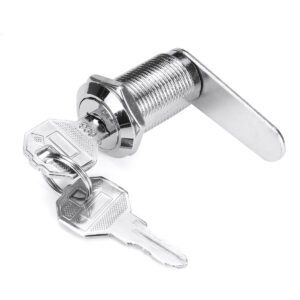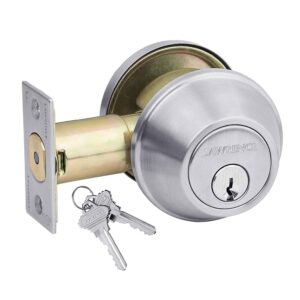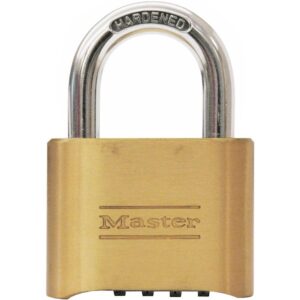Types of Door Locks and Their Security Level
Door locks are essential. They provide safety and security like no other appliance or tool. They act as the barrier to keep your facility and workspace safe and help maintain privacy. Efficacy is fundamental when seeking out locks for your facility.
About 2 million residences are broken into each year, so understanding the key differences between the types of door locks helps you make better choices for your facility. Or, if you are a locksmith or in the lock installation business, knowing these details will help you make more informed choices for your customers. Explore our guide to learn about five types of door locks, their best applications and the steps to install each of them.
What Are the Different Types of Door Locks?

1. Knob Locks
Knob locks are the most common type of door lock and the chief method of security for most doors. The lock cylinder is located in the knob instead of the door. Thus, knob locks should not be used on external doors, as they can be broken into with basic tools like a hammer or wrench.

2. Cam Locks
Cam locks are a type of fastener that allows storage to be kept intact and do so in a latent way, so as to not affect the overall appearance. They are for the most part invisible in fully constructed cabinets. Cam locks usually come with sets of furniture and cabinet kits. These types of door locks are cylindrical and are situated in the wooden part. A metal tube with a hole in one side helps position the bolt that is inserted. Certain cam locks secure cabinet doors completely, which make them attractive measures for keeping sensitive materials. Cam locks use various tailpieces or “cams” to create a locking mechanism.

3. Deadbolt Lock Types
Deadbolts offer the best protection against a burglary or break-in. Lock bolts are moved by turning a knob or key without the use of a spring. Deadbolts feature a unique locking mechanism that resists physical attacks, battering and boring. They cannot be opened with a knife or hand tool. Deadbolt locks come in three types: single, double and C.
Single cylinder deadbolts are the simplest ones and can be activated from one side via a key. A double cylinder deadbolt can be used with a key from both sides. A single, double and lockable thumb turn deadbolt features a thumb turn inside that can be locked with a key. This type of deadbolt provides the greatest flexibility and security.

4. Padlocks
Padlocks belong in the free-standing lock group. They are portable, meaning unlike other lock types, they are not permanently attached to a door or anything that uses it. Padlocks come in a variety of models that are grouped into two main categories: keyed and combination. Keyed padlocks alone are available in different subtypes, like keyed alike, keyed different and keyable. Padlocks are easy to recognize, not merely due to their mobile nature, but also because of their looped-handle shackle shape. They contain a shouldered shackle, a part in which the padlock shoulders raise the sides of the shackle to inhibit bolt cutters from cutting through it.

5. Mortise Locks
Mortise locks are powerful locks used on external doors. However, they are available in both light and heavy duty models. They are comprised of an internal system which makes them more of locksets than just locks. These locksets can house either knobs or levers and are often comprised of a cylindrical body. They are threaded and utilize mortise components added within the door. A box lock is set within the mortise, which is a deep recess in the edge of the door. Mortise locksets stay secure by using a set screw and a cam which creates the locking mechanism. The cylinder component comes in various heights and lengths for different types of doors.
Door Lock Types by Security & Use
| Type | Security Rating | Best Used for |
|---|---|---|
| Padlock | ???? | Lockers, Drawers, Trash Units, Sheds |
| Cam Lock | ???? | Cabinets, Drawers, Mailboxes and Lower Security OEM applications |
| Knob Lock | ???? ???? | Interior Doors |
| Deadbolt | ???? ???? ???? | External Doors |
| Mortise Locks | ???? ???? ???? | Commercial Doors, Entry Glass Doors and Apartment Doors |
All Locked Down
There are plenty of other door locks and many fall within the five categories of knobs, deadbolts, cam locks, padlocks and mortise locks. For example, lever handle door locks are used for inner doors and work much like knob locks. Besides door lock considerations, it is important to scrutinize the door for lock installation, namely for its backset. Measuring the backset of a door determines if your lock will fit it properly. The backset is measured from the center of the lock’s hole to the edge of the door.
Door handedness is another crucial factor for lock installation, as some locks work with a specific handedness of a door. Deadbolts can be installed on either type of door-handedness without any problem. Check for which side of the door has the hinges, as right-aligned hinges mark a right-handed door while left-aligned hinges mark a left-handed door. Make sure to do the proper research before investing in a door lock.
Sources:
https://securitysnobs.com/Types-Of-Locks.html
http://www.safeguardtheworld.com/statistics.html
The product statements contained herein are intended for informational purposes only. Such product statements do not constitute a product recommendation or representation as to the appropriateness for a specific application or use. W. W. Grainger, Inc. does not guarantee the result of product operation or assume any liability for personal injury or property damage resulting from the use of such products.
